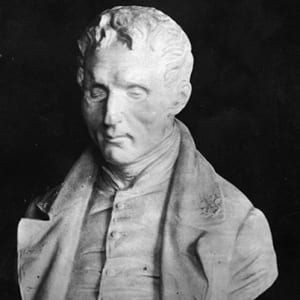Louis Braille
For Louis Braille, blindness was more of a gift than a curse. At the age of three, Louis was playing in his father’s leather workshop. As he was trying to imitate his father, he slipped, piercing his eye with an awl—a leather punch. This injury caused his eyes to become infected, and that infection took his sight. Despite his lack of sight, he was still very invested in his education, and very good at school. To further his education, at the age of ten, his parents transferred him to the Institution Nationale des Jeunes Aveugles—the National Institution for Blind Children—in 1819. At this boarding school for the blind, he learned of night writing—a system of tactile writing. This was created by Charles Barbier, a captain in the French army. On the battlefield at night, it was risky to light a lamp to read messages because it might give away your position. Night writing was a series of 12 unit cells, in which each combination of dots and dashes represented a sound. When put together, these sounds formed messages. However this proved to be too complicated to use in an army setting. At the age of 12, Braille saw its potential, and began to modify it by removing the dashes, and reducing the size of the cells to six dots, with each pattern representing a letter of the alphabet. His fellow students found this system to be the best of the ones they had access to.

Bust of Louis Braille from Biography